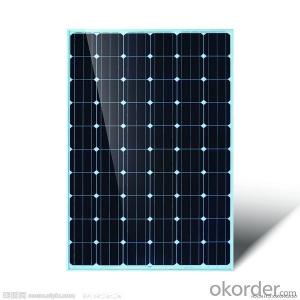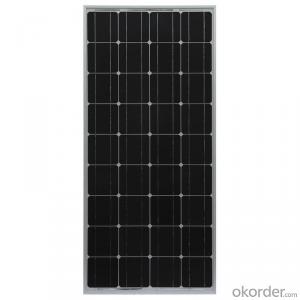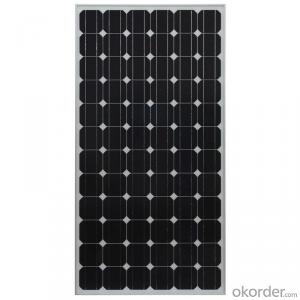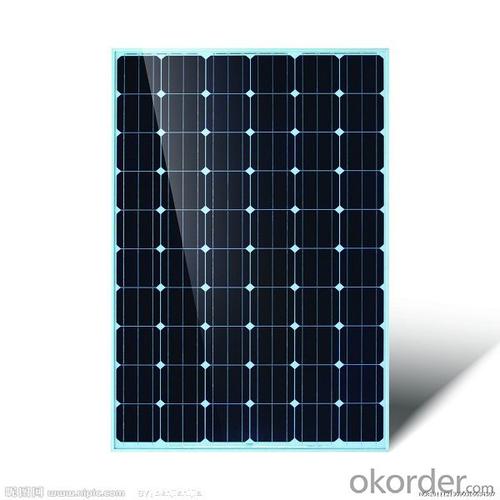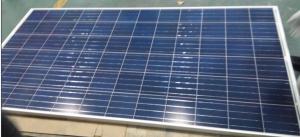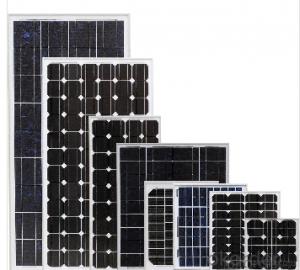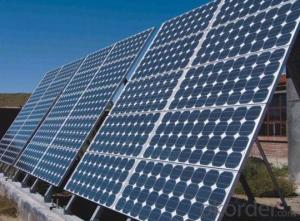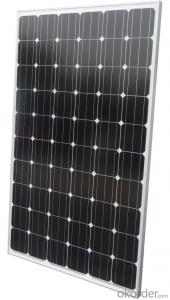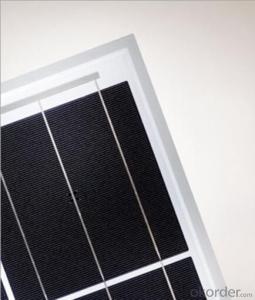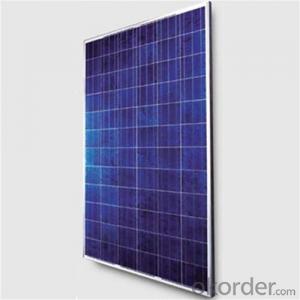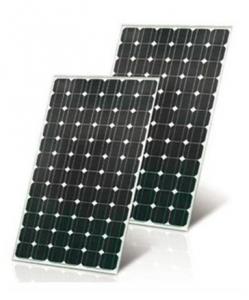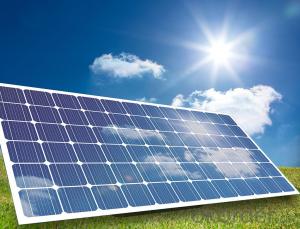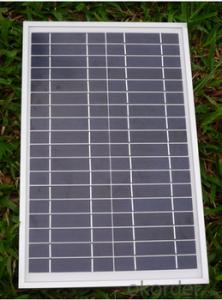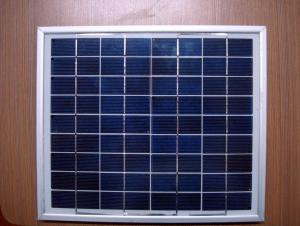Tampa Solar Panels 250w Monocrystalline Solar Module for 12v Battery Charging
- Loading Port:
- Tianjin
- Payment Terms:
- TT OR LC
- Min Order Qty:
- 100 watt
- Supply Capability:
- 10000000 watt/month
OKorder Service Pledge
OKorder Financial Service
You Might Also Like
Specification
Product Description
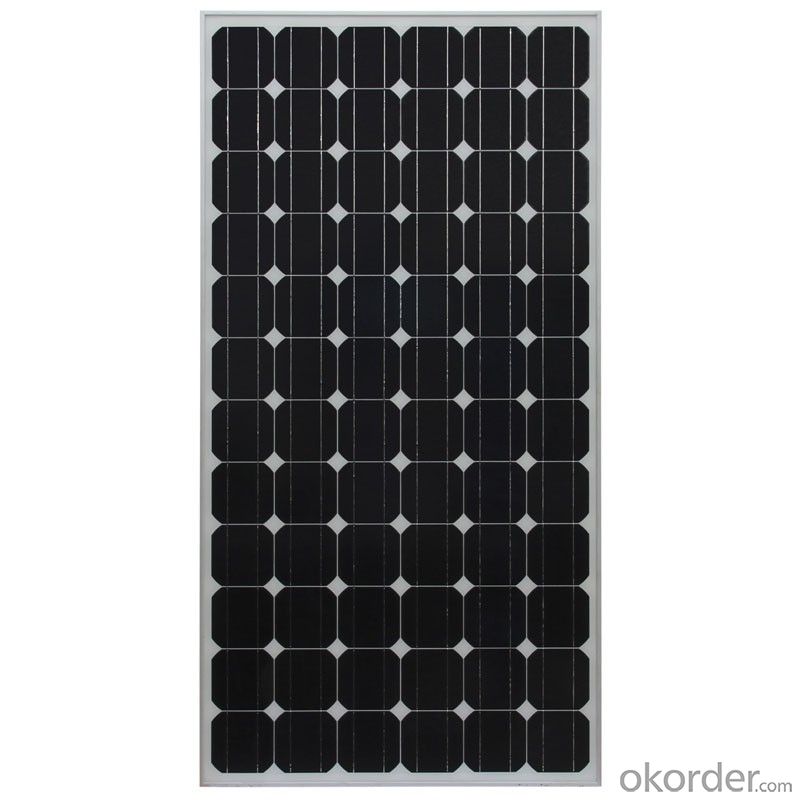 FEATURES
FEATURES
Long Service Life
High Efficency Solar Cells
Special Aluminum Frame Design
High Transmission,Low Iron Tempered Glass
Advanced Cell Encapsulation
APPLICATIONS
Solar power stations
Rural electrification, Small home power systems
Power supply for traffic, security, gas industry
12V and 24V battery charging system
Other industrial and commercial applications
MONO or POLY | MONO |
Maximum power (Wp) | 250wp |
Maximum power voltage (V) | 30.96 |
Maximum power current (A) | 8.07 |
Open circuit voltage (V) | 37.92 |
Short circuit current (A) | 8.62 |
Number of cells (Pcs) | 60 |
Size of module (mm) | 1650*992*50/40 |
Brand Name of Solar Cells | No |
Maximum system voltage (V) | 1000 |
Temperature coefficients of Isc (%) | 0.065+/-0.015%/°C |
Temperature coefficients of Voc (%) | -(2.23+/-0.1)mv/ °C |
Temperature coefficients of Pm (%) | -(0.5+-0.05)/ °C |
Temperature coefficients of Im (%) | +0.1/ °C |
Temperature coefficients of Vm (%) | -0.38/ °C |
Temperature Range | -40°C~+85°C |
Tolerance Wattage (e.g. +/-5%) | +/-3% |
Surface Maximum Load Capacity | 60m/s(200kg/sq.m) |
Allowable Hail Load | steel ball fall down from 1m height |
Weight per piece (kg) | 21.5 |
Length of Cables (mm) | 900 |
Cell Efficiency (%) | >17.9% |
Module Efficiency (%) | >15.27% |
Output tolerance (%) | +/-3% |
Frame (Material, Corners, etc.) | Aluminum |
Standard Test Conditions | AM1.5 1000w/m 25°C |
Warranty | 5 years product warranty and 25years 80% of power |
FF (%) | 76.48% |
Packing | 2PCS/ CTN |
Unit Price |
Specifications
1.A grade high efficiency solar cells.
2.TUV/UL/CE/CEC etc
3.Fast shippment
4.25 years warranty
5.OEM/ODM
1. A grade high efficiency solar cells.
2.TUV/UL/CE/CEC etc
3.Fast shippment
4.25 years warranty
5.OEM/ODM
- Q: We are considering getting solar panels for our home just south of Birmingham, AL. We know a little and are trying to educate ourselves the best we can. But we are having a hard time finding anyone around this area. We have done the yellow page thing, and some quot;green places around town. But to no luck.....
- Any electrical contractor could likely install them, and there are several Internet businesses that sell solar panels. You likely have no place there to get the kind of large panels you need for a house. Look at your local regulations. Your utility may not allow grid-tie, so you may have to set up an off-grid system with batteries and use separate wiring or a transfer switch. One thing a lot of people neglect is hail protection. In Birmingham, you're likely to have large hail (larger than golf ball size) every couple of years in the spring. You need to work out a way of covering them in advance of severe weather. Most panels will take up to golf-ball size hail with no problem. DK PS, I've done this myself, and have considerably more information. Email if you're interested.
- Q: How does the snow cover get removed from the panels?
- Green energy magically makes the snow transparent. The more I learn about solar and wind, particularly selling excess power back to the utility, the less sense it makes. You'll have noticed, perhaps, that there was no way to store the power from the panels for when it's really needed.
- Q: Am using 800watts sukam inverter and have 55watts panel. What controller can i use to connect my solar system to have a max power . Already i have 200 Amp/hr battery
- If that 55-watt panel has an open circuit voltage of 7-8 volts, you may get more efficiency by omitting the charge controller completely, and connecting the panel straight to the battery. 55 watts is marginally too small for a 200 AH battery at 2 volts, by the way.
- Q: Can solar panels be installed on churches or religious institutions?
- Yes, solar panels can be installed on churches or religious institutions. In fact, many religious institutions have embraced solar energy as a way to reduce their carbon footprint and promote environmental sustainability. Installing solar panels on churches not only helps them save on energy costs but also serves as a symbol of their commitment to caring for the planet and being good stewards of the environment.
- Q: Can solar panels be used to power a mining operation?
- Yes, solar panels can be used to power a mining operation. Solar power systems can generate electricity by converting sunlight into energy, which can then be used to power various mining equipment and operations. This clean and renewable energy source can help reduce the environmental impact of mining operations and also provide a cost-effective alternative to traditional power sources. However, the feasibility and effectiveness of using solar panels for a mining operation would depend on factors such as the energy requirements of the operation, available sunlight, and the size and efficiency of the solar power system.
- Q: I have 2 20 watt Solar panel. I have it hooked up to solar controller and batteries to inverter. Am trying to figure out how much watts am getting. I found the voltage but how do I find the amp reading on a mutimeter?
- While you can measure voltage on a like without a load, the measure of amperage is more closely related to the amount of power that is being drawn. The amperage is measured with the meter in series (not parallel like voltage) with the load. What it ends up measuring is the load that is being drawn from the solar panel and not the potential of the panel.
- Q: I am looking to wire in some solar panels into my home. I already have plenty of wiring, and some solar panels around. I just need to know what I need to do to wire them into my home so I can lower my electric bill. This past month it was six hundred dollars.Can someone direct me to some information, or tell me how without telling me to hire some guy to come out to charge me thirty thousand dollars to install two or three thousand dollars worth of equipment?
- The essentials are to connect the panels in a configuration that matches the inverter. My system has twenty 24 volt panels in series, to an inverter that wants to see 480. They could have been in any series-parallel configuration to match an inverter that used different voltage. I chose the high voltage route to reduce IR losses in the connections. The proper inverter is essential on grid connected systems. It must be able to disconnect from the grid if grid power fails, and to come back on line automatically, and in phase. There has to be a fused disconnect between the panels and the inverter. When connecting to the grid, another fused disconnect is required. My power company was very specific about acceptable switches. Just using a good brand doesn't hack it. Lots of good info on solar panels in the green search box above on this page.
- Q: My Grandfather just purchased a cheap solar panel kit for his ranch that could not muster enough power to run his mini fridge.He has two 6 volt batteries running positive to negative and would like to add more batteries. Probably 2volt. How would he go about hooking up the other batteries and what kind of wire or coil should he use.Also, I saw on youtube a guy recommending a lead-acid battery from walmart for under $20. I was just going to go to ecology and just pick up some used batteries but I may be wrong.Any help for a first timer might help me and my gramps out will be appreciated.Thank you
- Solar charger employs solar energy to supply electricity to devices or charge batteries. They are generally portable. Solar array: electrical device consisting of a large array of connected solar cells Solar Panel is a group of solar cells arranged into a panel that can be installed onto a flat surface. The panel captures sunlight and converts it into DC power.
- Q: I riped two solar panels out of some solar light and tested them. I found out that they both produce 2 volts(I have no idea on the watts or amps). Iquot;ve hooked them up to an electric motor that can be driven by a AA battery, but when I hook the solar panels up to them nothing happens. What is wrong?
- The solar cells you have are not providing enough current to operate the motor. There are special low power motors which can operate directly from a solar cell but it sounds like you do not have one of these. Instead you have a common .5V DC hobby motor which requires substantially more current to operate. You can use the original circuit to charge the batteries and use the charged batteries to run the motor. The batteries would be able to supply enough current to operate the motor, but for a limited time. 8 hours of charging might give you less than 5 minutes of motor operation. An LED will draw about 20ma. In a solar light such a small current draw from an LED or two can provide hours of light. A Small DC motor might easily require 300ma to run and over 500ma to start. Running a motor from the same battery at over 5 times the current draw will result in less than /5 of the run time compared to the low current LED. So if an LED operates for 300 minutes the motor would run for less than 20.... The small solar cell size cannot provide enough current to operate the motor directly. Only by slowly charging a battery first would you be able to use the collected and stored Solar energy to operate your motor.
- Q: Can solar panels be used for off-grid living?
- Yes, solar panels can be used for off-grid living. They are a popular and sustainable option for generating electricity in remote areas or locations where there is no access to the traditional power grid. Solar panels collect energy from the sun and convert it into usable electricity, which can power various appliances and systems in an off-grid home. Additionally, by incorporating batteries or other energy storage solutions, solar panels can provide a consistent power supply, even during periods of low sunlight or at night.
Send your message to us
Tampa Solar Panels 250w Monocrystalline Solar Module for 12v Battery Charging
- Loading Port:
- Tianjin
- Payment Terms:
- TT OR LC
- Min Order Qty:
- 100 watt
- Supply Capability:
- 10000000 watt/month
OKorder Service Pledge
OKorder Financial Service
Similar products
Hot products
Hot Searches
Related keywords
